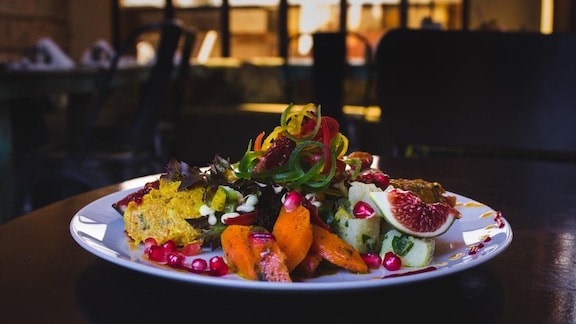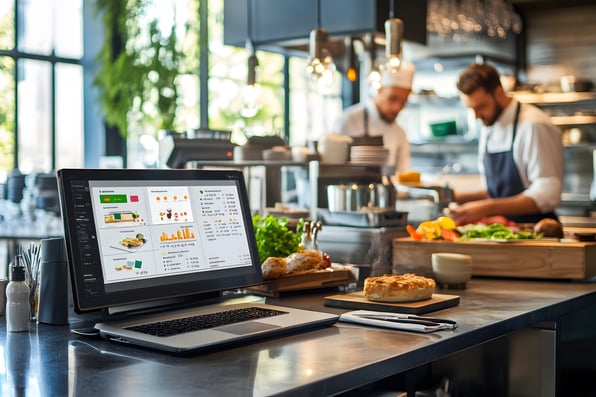What Is a Cycle Menu for Seniors?

What Is a Cycle Menu and How Does It Work for Senior Living?
More and more older adults are choosing to move into senior living communities. For many of them, full-service dining options are an alluring option. Seniors enjoy the convenience of on-site dining and the social aspects of sharing a meal with friends and neighbors.
At the same time, senior living community residents don’t want to sacrifice food quality. They want a variety of delicious food that meets their dietary needs. Using a cycle menu from FreshMenus and eMenuChoice allows dining services to provide diverse, nutritionally balanced meal plans that residents can enjoy.
What Is a Cycle Menu in Senior Living?
A cycle menu is essentially a repeating meal plan for dining services. Dining managers have a pre-planned menu for the week or several weeks. At the end of that period, the cycle starts over at the beginning. The cycle menus include selections for breakfast, lunch, dinner, soup of the day, and “Always Available” or a la carte menus.
For a senior living community, you can post the menu on the online portal so residents can see menu offerings in advance. This can guide their dining choices throughout the cycle period.
In addition, cycle menus include the option to modify items in response to dietary requirements for residents. The menu includes instructions and ingredients for changes, such as avoiding allergens, reducing sodium, or addressing texture needs.
What Is the Purpose of a Cycle Menu in Senior Living?
Menu planning in senior living communities requires attention to many details. The foremost priority is to offer varied, fresh, and delicious food so residents enjoy their meals. It’s also essential that offerings include nutritionally balanced meals with a focus on the health needs of your residents.
Cycle menus ensure that meals meet the needs of senior living dining with maximum efficiency and minimum food waste. The dining staff knows they have the proper ingredients in the proper quantities. Cycle menus ensure high-quality scratch-made meal options featuring different types of food with less waste and excellent service.
Tips on How To Implement a Successful Cycle Menu in Senior Living Communities
Senior living community residents often cite mealtime as their favorite time of day. Menus and food selection should look to enhance the resident customer experience, as well as address dietary restrictions and preferences, while leveraging assisted living technology to prevent slowdown in the kitchen.
Incorporate Nutritional Variety
Offering a variety of meal choices is important for both nutrition and enjoyment. Repetitious menus with similar entrees and sides day after day may disappoint residents. Moreover, too much of the same foods can lead to nutritional imbalances.
Menus should include a variety of ingredients with limited repetition throughout the cycle. Choosing foods that mimic meals a home cook might make, with the same level of variety as homemade meals, can ensure that residents have balanced nutrition and plenty of tasty choices.
Adapt the Cycle Menu to Accommodate Special Diets and Preferences
Fielding special requests is part of any dining service. Diners often require adjustments to a menu item based on preferences, dietary restrictions, or health concerns. Staff should select items for senior dining cycle menus with an eye toward adaptability. Kitchen staff should have the ability to easily adjust preparation to accommodate special diets, such as vegetarian options, low-sodium foods, diabetes-friendly meals, high-fiber foods, and high-protein diets. In addition, the menu can accommodate guests who may be joining loved ones for a meal.
Leverage Assisted Living Technologies
Community management tools such as online resident profiles and point-of-sale platforms can synchronize with cycle menus for maximum personalization. Residents can use online ordering to collate their personal dietary needs with menu items. The systems can suggest modifications to accommodate resident needs and share that information with kitchen staff as they prepare the meal.
Benefits of Cycle Menus
Cycle menus allow dining service staff to operate efficiently, with fewer mistakes and less waste. Residents can take advantage of the customizable menu options, which enjoy a variety of made-from-scratch food choices with limited repetition.
Create a Positive Dining Experience Through Menu Diversity
Themonthly menu cycle from FreshMenus ensures that it limits repetition during any given cycle. Residents can experience a variety of food choices throughout the cycle while still getting to taste particular favorites every few weeks.
Communities can also adjust the cycle seasonally. This allows variety in meal components and includes fresh, seasonal produce, as well as recipes that suit the weather and reflect seasonal special occasions.
Optimize Operations and Staff Efficiency
Cycle menus allow for significant advance planning for dining staff. A four-week cycle means they have a predictable workflow for food preparation. They can also anticipate modifications based on requests from previous cycles. There are fewer errors and delays, particularly when dining staff incorporates online menus for ordering and POS platforms like eMenuChoice to synchronize resident profiles with menu selections.
Enhance Inventory Management and Cost Control
Inventory management influences the design of menu cycles. Dining service managers can anticipate supply needs and order ingredients accordingly. Pre-planned cycle menus include instructions for customization so dining staff can ensure they have the right alternate ingredients on hand.
The sequence of meals maximizes kitchen efficiency and minimizes food waste. Meals on consecutive days may use similar ingredients. However, each day of the cycle includes unique menu offerings. Residents won’t feel stuck with leftovers from the previous day.
Continuously Enhance the Resident Experience While Improving Staff Efficiency
The variety and flexibility of a made-from-scratch menu cycle items appeal to residents in senior living communities. The menus also improve dining service efficiency. Staff gain familiarity with menu items, easing both preparation and customization processes. This reduces errors and potential waste from incorrectly prepared food.
The basis of these menu cycles keeps food use in mind. Meal plans allow kitchen managers to know what ingredients to stock and in what quantities. By synchronizing menu cycles with point-of-sale platforms and past resident ordering data, dining staff can anticipate customization needs. Kitchen inventory planning can reflect the real needs of residents with less guesswork and less food waste.
If you want to learn more about the eMenuChoice point-of-sale system and FreshMenu menu cycle options, contact us to set up a demo. We can help you choose the best system to meet your residents’ dining needs.



